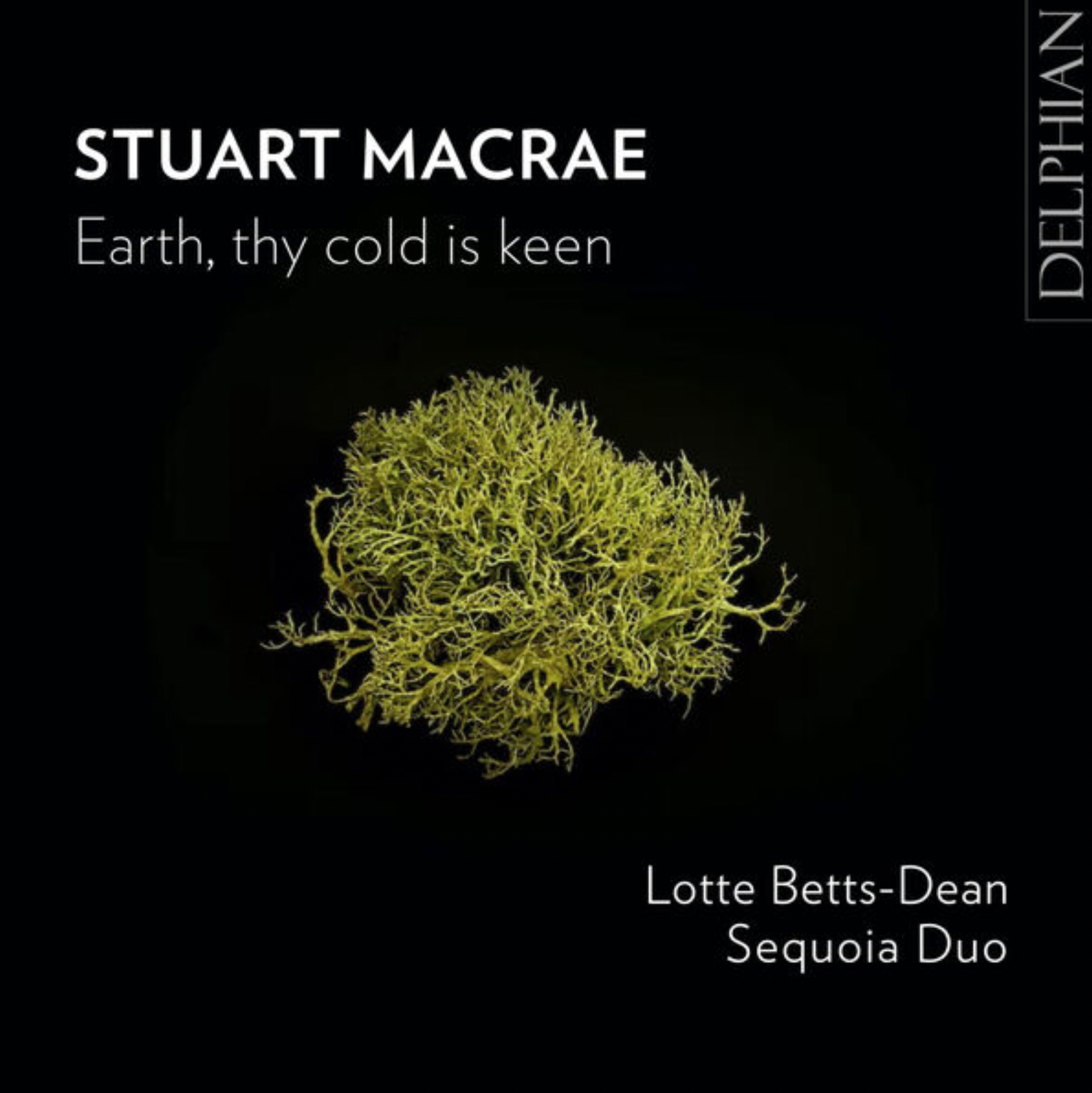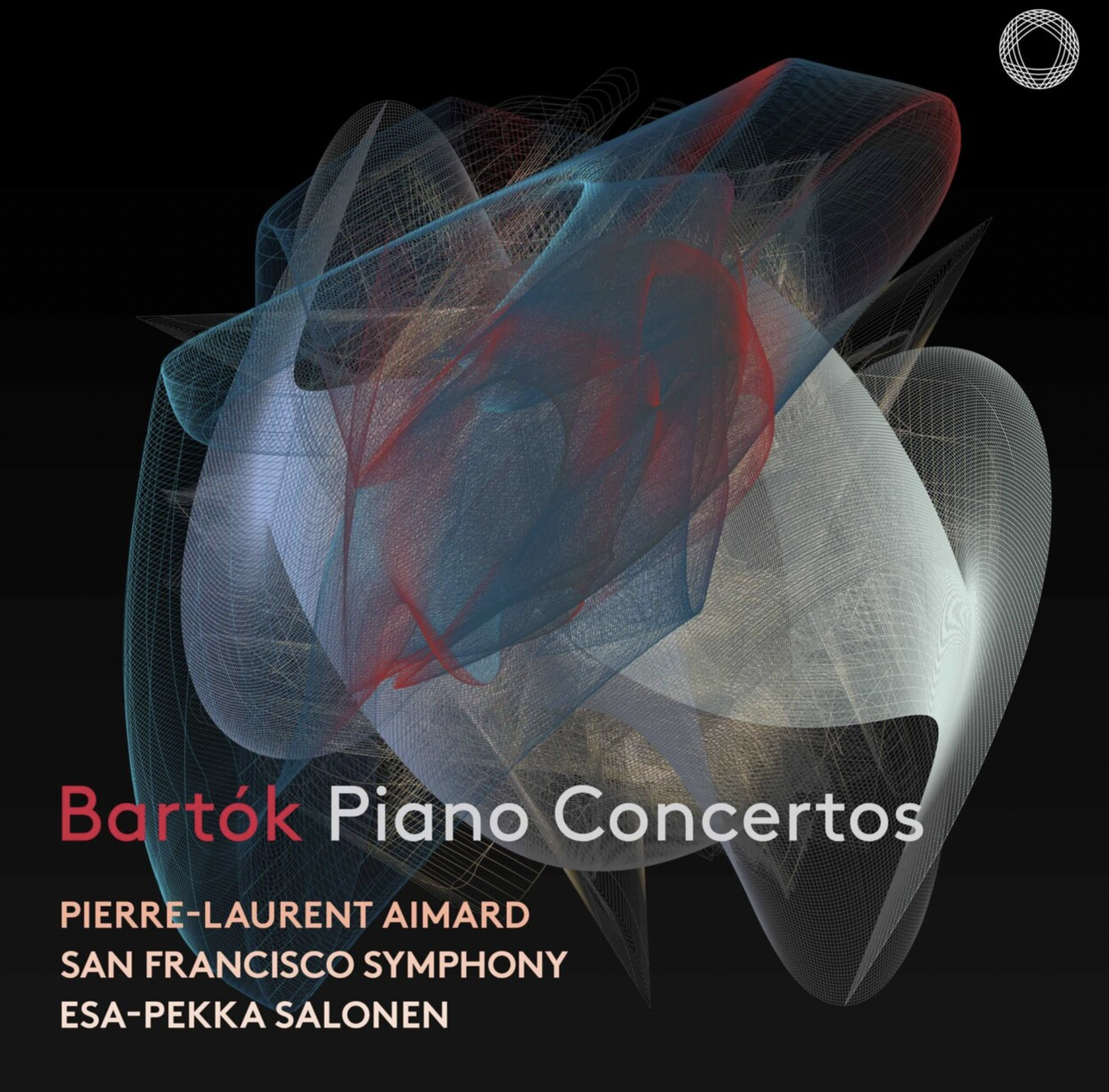September’s Classical Choices is a richly varied offering. New releases include a recording of works rooted in ancient folk idioms from Lotte Betts-Dean, Sequoia and Stuart McRae; historically informed Ravel from the Linos Trio, and Bartók piano concertos from Pierre-Laurent Aimard with Esa Peka Salonen and the San Francisco Symphony. To preface all this, I’ve opted for something entirely different: a beautiful reminder of the Vienna Philharmonic’s famed pearly elegance, via the first movement of its 1981 recording with Carlos Kleiber of Brahms’s Symphony No 4.

Stuart McRae: Earth, they cold is keen
Lotte Betts-Dean & Sequoia
In 2021, Stuart McRae heard mezzo soprano Lotte Betts-Dean sing his 2008 setting of an anonymous text written in Middle English, ‘The Lif of this World,’ and was captivated by the way she shaped its phrases and ornamentation. The work already represented an interesting stylistic departure for McRae: its musical language is less characterised by modernist techniques than previous works (atonality, wide and often angular leaps, fragmentation of text) and draws instead on the ornamentation and simpler lines associated with folk tradition. Hearing Betts-Dean’s interpretation sparked a creative burst which saw McRae complete eight new vocal compositions for her within the space of two years.
It’s this body of work that forms the contents of this often otherworldly-sounding album, along with two works for violin and cello duo Sequoia. McRae himself can also be heard performing on electronics and his grandmother’s harmonium – the instrument on which he began composing.
The programme’s 11 works are slanted largely in the same folk-inspired direction, but the stylistic variety within this overall cohesiveness is immense. ‘The Lif of this World’ and ‘Stond wel, Moder, under rode,’ have a folky simplicity, with Betts-Dean floating out ancient, elemental-feeling lines to only the barest and most sporadic instrumental support. In contrast, the Sequoia’s lilting accompaniment to the traditional Skye song, ‘Chaidh mo Dhonnachadh ’na bheinn,’ is far more texturally involved.
McRae hasn’t left his modernist techniques completely by the wayside: Sequoia’s commission, ‘the ebb,’ – an atonal tone poem depicting the sea in all its moods – balances jagged-lined, rhythmic urgency with slowly sliding calm. Elsewhere, ‘elided compressed’ features processed recordings of Betts-Dean’s voice layered to form a pointillistic patchwork onto which her live voice then interacts via wide-leaping, tonally nebulous writing and spoken word. Betts-Dean is a marvel throughout, with her combination of pure, clear, strong tones, and a breathtakingly effortless technique that has her negotiating leaps, ornamentations and sharp dynamic shifts with silky ease.
I’ve given you the three-movement Emily Brontë setting with which the programme opens, The Captive, followed by ‘elided compressed’ and ‘Chaidh mo Dhonnachadh ’na bheinn’, for the playlist.

In Search of Lost Dance
Linos Trio
There’s an equally antique quality to the Linos Trio’s latest recorded project (albeit of a very different flavour), which employs a mix of historically informed performance and self-penned transcriptions to offer alternative angles on three of Ravel’s most famous works: the Piano Trio in A minor, followed by the trio’s own new transcriptions of piano works, Le Tombeau de Couperin (all six movements) and the Pavane pour une infante défunte.
Pianist Prach Boondiskulchock features on an 1832 Érard concert grand – a slightly larger version of the Érard Ravel had in his home, with the same parallel stringing and mostly wooden frame (as opposed to the cross-strung, steel-framed modern Steinways with their higher tension).
Violinist Konrad Elias-Trostmann and cellist Vladimar Waltham’s instruments, meanwhile, are gut-strung, with Elias-Trostmann opting for three plain and one wound, and Waltham two of each.
The final block of the conceptual foundations for this album is an attempt to delve inside Ravel’s mind, in terms of both his personal piano-playing style – with help from scholarly sources (including the 1922 piano roll of his playing) and contemporary descriptions – and how he might himself have approached a piano trio transcription of a piano work, for which a key reference point was inevitably his Piano Trio.
The result of these efforts is a notably more lucid, lighter-weight and more softly kaleidoscopic sound palette, in which individual instruments blend together like a dream – as evidenced in the smokily vibrating final chord of the Piano Trio’s opening Modere. There’s a further prominent period performance touch in the form of the violin and cello’s liberal use of portamenti (slides) which, thanks to Elias-Trostmann’s and Waltham’s gentle handling, is mostly very successful as an interesting contributor to the readings’ overall whimsical quality and impression of freedom (head to Le Tombeau de Couperin’s Menuet to hear it being deployed especially effectively).
Le Tombeau… is a particularly lovely re-imagining: gracefully airy of texture and touch, and thoughtfully phrased and coloured with the little portamenti and tucked ornaments. Take the dainty filigree, sighing hush of its Fugue (one of the two movements that Ravel omitted from his own orchestral transcription), or the crisp-rhythm’d weightlessness of the Forlane as it dances puckishly along. The album title certainly holds true, with dance quality being coaxed attractively out in every which way.
For the playlist, I’ve given you Le Tombeau de Couperin.

Bartók: Piano Concertos
Pierre-Laurent Aimard, San Francisco Symphony, Esa-Pekka Salonen
If you were looking for an overview of Béla Bartók’s life by way of a single section of his compositional output, then his three piano concertos would not be a bad place to start. The First, in E minor, was written in 1926 when a crumbling Hungarian economy necessitated a concert tour. For this, Bartók needed a modern, fresh-sounding piano concerto to demonstrate his mettle as a virtuoso pianist-composer. What he created was a rhythmically chopping and changing, flourish-filled virtuoso tour-de-force full of complex counterpoint and energetic interplay between soloist and orchestra – its notable originalities including the piano and percussion opening to the slow movement – which he toured to various European cities plus New York.
The Second, composed 1930-1933, was in musical terms almost a sister work. It was cast in E minor’s relative major, G, and is similarly virtuosically sparkling and melodically spiky, while also being slightly more tonal. Once again, Bartók himself took to the stage as soloist at its Frankfurt premiere, which would turn out to be his last German performance – the concert took place a week before Hitler (whom Bartók opposed from the outset) came to power.
Onwards to the Third and 1945, the year Bartók died of cancer in America. (He endured a lonely existence in political exile after fleeing his homeland in protest at its alliance with Nazi Germany). This time, his goal was not to produce a work he could play, but instead to bestow a parting gift on his pianist wife, incorporating elements of his beloved Hungarian folk music idioms along with Bach-like counterpoint (most notably the fugal finale) and American ragtime.
All of these works bristle here with drama, colour and sharp dialogue. In 1933, after conducting Bartók in the Second, Otto Klemperer described how, ‘the energy and lightness of his playing were unforgettable. It was almost painfully beautiful’ – and that’s very much what you get from Pierre-Laurent Aimard, with his tautly nimble flow and bright clarity. Esa-Pekka Salonen and the orchestra bring to this excitedly close dialogue, while matching Aimard in virtuosity and colour. Head to the Third’s central movement for perhaps the most wonderful example of playing that has the capacity to stop a person in their tracks. Here, they’ve worked softly luminous wonders on its hymn-like outer sections, and brought a different and equally ear-pricking brand of glowing perfection to its central scherzo of buzzing night-time insects. It’s the Third Concerto I’ve given you here.

